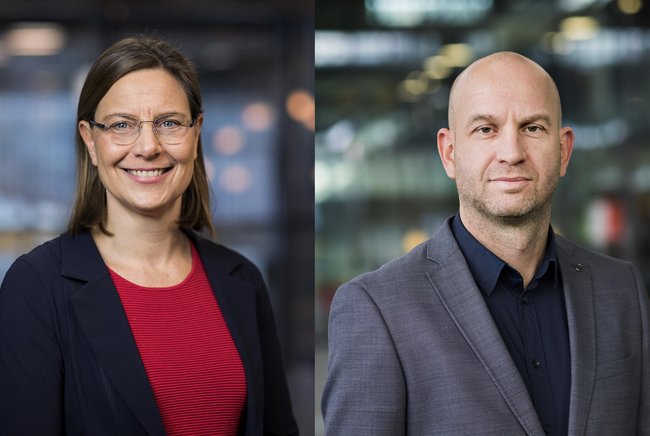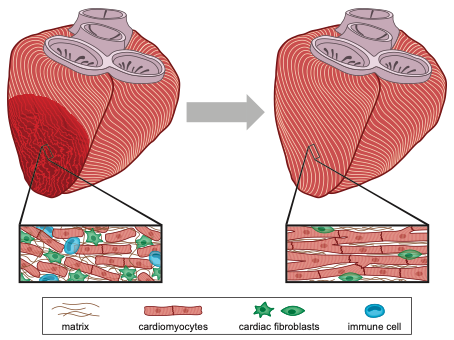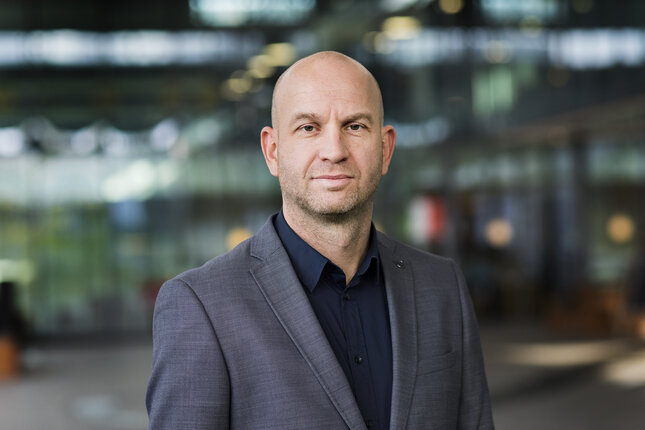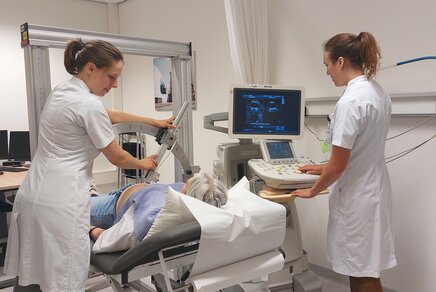ERC Advanced Grants for Carlijn Bouten and Maurice Heemels
Research into restoring order in damaged heart muscle tissue and into an entirely new control paradigm for high-performance systems is rewarded with prestigious ERC Advanced Grants worth 2.5 million euros.

Two TU/e researchers are recipients of particularly good news: a personal ERC Advanced Grant for their promising but high-risk research proposals. Professor Carlijn Bouten will investigate how the organization of heart muscle tissue can be restored when the heart muscle heals after an injury. Professor Maurice Heemels’ research focuses on establishing a new control engineering paradigm aimed at finally breaking through the known limitations of existing control systems for the high-tech systems of the future.
These grants of €2.5 million each are awarded by the European Research Council (ERC) for research by leading scientists who wish to pursue an original high-risk, high-reward research proposal. The researchers and their teams can use the funding for their research over the next five years.
Carlijn Bouten (Department of Biomedical Engineering)
The ambitious research goals for which Carlijn Bouten, Professor of Cell-Matrix Interactions in Cardiovascular Regeneration at the Department of Biomedical Engineering, plans to use the ERC Advanced Grant capture the imagination.
“I would like to make the knowledge we have of tissue engineering more applicable to patients and take the step towards ‘remote tissue engineering’. My goal now is to restore the original, anisotropic organization in damaged tissue, in which the cells and structures are chaotically organized after wound healing (as in scar tissue). Indeed, what we currently see in practice is that after damage, the scar and the connection to the healthy tissue are the weak points, both in terms of functionality and of the longevity of the tissue,” says Bouten. She continues: “Actually, I want to use this grant to get to the bottom of how order and chaos arise in living tissues and how we can restore order for better functionality in repaired tissue.”

Living heart muscle
The research focuses on repair in the living heart. The goal is to eventually be able to repair cardiac tissue exclusively using the self-organizing capacity of the tissue. “Once I have fully explored this capacity, I then aim to use ultrasound to encourage tissue to organize itself. Previous research has shown this to be possible, but those studies did not take place in living tissue. Now the task is to understand exactly what happens in living cardiac tissue, so that we can eventually use this technique for a new non-invasive repair method in regenerative medicine. Just applied by a cardiologist in the hospital, and without surgery."
An ERC Advanced Grant is awarded to high-risk, high-reward research. “The risk is that in this research we may not yet succeed in being able to control the self-organizing capacity, but then I would at least like to achieve a much better understanding of how order and chaos affect the mechanical and biological function of tissues in the body,” Bouten adds. Carlijn Bouten received the 2.5 million euro grant along with an additional half a million euros for equipment.

Regenerative ultrasound technique
One of the colleagues who will be closely involved in the research is Richard Lopata. An associate professor within Biomedical Engineering, he leads the PULS/e lab, Photoacoustics & Ultrasound Laboratory Eindhoven, among others, and will be looking into changing the structure of living tissue with sound waves. “The previous research involved small pieces of tissue in a laboratory. We are very excited that we are now going to investigate whether we can organize living tissue using this technique,” Lopata says. "We are going to manipulate the structure of cardiac tissue with pressure waves, whereby cells and the tissue matrix specifically look for the spots between interfering pressure waves where the pressure is zero, i.e., the nodes. With the ultimate goal that the repaired tissue will again assume the typically anisotropic organized structure of natural, healthy cardiac tissue.”
Furthermore, we are working closely with the Leiden University Medical Center to test and refine the technique in isolated ex-vivo beating hearts derived from reused laboratory animals. In addition to providing very good control over our experiments, reuse also reduces the total number of laboratory animals needed in the Netherlands. Leiden has this technique in house.
Maurice Heemels (Department of Mechanical Engineering)
The research of Maurice Heemels , full professor of Systems and Control Theory at the department Mechanical Engineering, can also rightly be called high-risk, high-reward. “In control engineering for linear processes we have been working with linear control systems for decades. We know these control systems inside out, there are powerful design tools for them and the underlying linear process models, which are required for the design, are easy to get hold of,” says Heemels. Examples of this can be found in many high-tech systems and production processes around the world.

“But, it is crucial to look for performance improvements of our controllers, to achieve even greater accuracies and/or speeds in the high-tech systems. At present, we are already running up against the limits of linear controllers in practice. Therefore, work has also taken place already on non-linear or so-called ‘hybrid’ control technology for linear and also non-linear processes. In hybrid control technology, we are trying to intelligently switch between different linear controllers, because we expect this to produce enormous performance improvements.
“However, this is proving difficult to translate into practice, mainly due to the fact that the power of the design tools of hybrid controllers is in stark contrast to that of the tools available for linear controllers. The lack of an underlying, conclusive theory that underscores this hybrid control technique for linear processes is to blame, which means it remains difficult to capitalize on the potential benefits of hybrid controllers in practice.”
Hybrid control technology based on mathematical projections
Heemels wants to thoroughly address this gap in control technology from the ground up. “I want to start working with so-called projection-based controllers (PBC). These are specific controllers in which I combine ideas from linear control engineering with smart mathematical projection operators, which can directly lead to higher performance in terms of accuracy and speed (throughput) of the systems. To understand and effectively design these control systems, an entirely new mathematical descriptive model is needed,” says Heemels.
Understanding this new class of mathematical models is essential to creating the underlying theory of these hybrid controllers. “Moreover, it is crucial to be able to base the design of these new control systems on easily obtainable process models. Or better yet, that these systems become self-learning in the sense that they automatically learn the optimal settings in a data-based way. That’s something we want to work towards as well!"
“By exploiting the rich underlying mathematical structure of these new control systems, I believe we can really start to address the gaps mentioned above in control engineering. Based on that, we can then also start to develop design tools for use in practice,” Heemels continues. “Only when those design tools match up with how control engineers now work in practice will we have a workable solution up our sleeves. Then we can start to realize the performance improvements that we desperately need in a wide range of applications in our society.”
Fundamental
The new funding from ERC gives both scope and focus to the research. “It allows us to really focus on our research and its approach for the next five years and explore with freedom, giving us the peace of mind we need to really take fundamental steps and be able to do something revolutionary,” Heemels suggests. “In any case, our first step is to investigate and establish the underlying mathematical paradigm. I already have some ideas for how we can approach that. I'm looking forward to putting all my energy into getting this started.”
Maurice Heemels is optimistic about the approach he envisions. “I expect a lot from the PBCs we'll be working with. Projection-Based Controllers have a nice mathematical structure. This could well be the breakthrough that allows us to lay a solid foundation in hybrid control engineering,” Heemels concludes. “And with that, we can then finally say goodbye to the limitations of linear controllers. Worldwide, that would really be a breakthrough in our field.”
About the current ERC Advanced Grants
253 established, experienced researchers have won Advanced Grants from the European Research Council (ERC), including 27 in the Netherlands. The grants, worth an average of €2.5 million, will help experienced researchers to set up their own projects, form their teams and develop their best ideas over the next five years.
Established by the European Union in 2007, the ERC is Europe's leading funding organization for top-level pioneering research. It funds creative researchers of all nationalities and ages to carry out projects across Europe. The ERC offers four core grant schemes: Starting Grants, Consolidator Grants, Advanced Grants and Synergy Grants.
More on Health



Latest news


![[Translate to English:] [Translate to English:]](https://assets.w3.tue.nl/w/fileadmin/_processed_/e/0/csm_BvOF%202019_1031_BHF%20license%20TUe%20ILI%20copy_8a50884392.jpg)